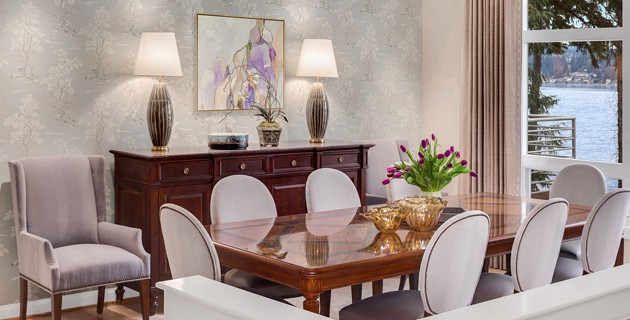When it comes to styling a home, understanding the size of space in which you're working with is paramount to introducing the right interior design. Flooring, lighting, color palette, and even placement of accent colors all come into play, either flattering or spoiling your interior style. In fact, what works great in large spaces may actually hinder aesthetics and experience in smaller spaces - and vice versa, of course.
When designing a home, size - or at least the perception of size - definitely matters. Small cramped spaces make us feel confined and even claustrophobic, while large bare spaces leave us feeling vulnerable. So, whether you live in a large home or a tiny house, these interior design tricks will help you master a few design fundamentals, and hopefully make the entire design process a bit easier!
No matter what actual size your home is, there are a few tricks you can do to bring balance to its size. Let's explore:
Let There Be Light
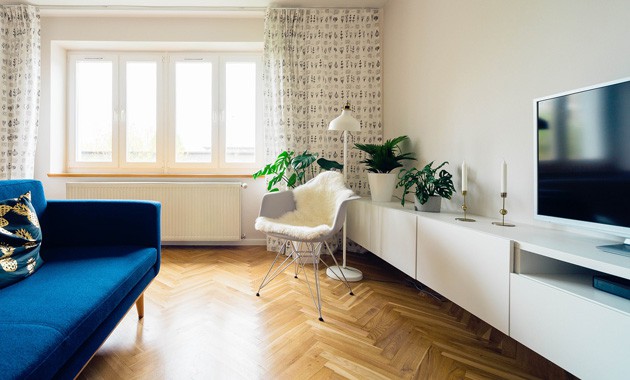
Natural light is important to homes big and small. Not only does light create a more open feel in a room, us humans (and most likely our pets, too) prefer natural lighting over artificial options - but I'm sure that's no surprise to you! Unfortunately, smaller spaces tend to have fewer windows, often leaving a darker feel to it. And, larger homes can also run this problem, as the amount of natural light very much depends on the position of the home/room - for example, north facing rooms will be the darkest.
Even if you're large interior doesn't need the light for a size-effect, if you’re home is generally dark, you should try to increase the amount of lighting as it will boost your mood and make your decor feel fresh and vibrant! If you can renovate and add windows, that’s a great start - if not, here are a few elements to think about:
Carpet vs. Hard Surface Flooring
Carpet is great for texture, adding a cozy touch and absorbing noise -- but with that, it also absorbs light. The absorption of light unfortunately makes full wall-to-wall carpet less-than-ideal for small rooms. Instead, hardwood, stone, marble, and lamenint are recommended as these shiny hard surfaces will reflect almost twice as much light, creating a feeling of spaciousness.
 Image Source: Lumar Interiors
Image Source: Lumar Interiors
Mirrors
Mirrors are known for reflecting light and are a great way to create the perception of windows. You can integrate one large statement mirror or two mirrors, such as on both sides of the bed or fireplace. The more surface there is to bounce light off of -- mirrors and hardwood floors -- the more room you’ll think and feel you have.
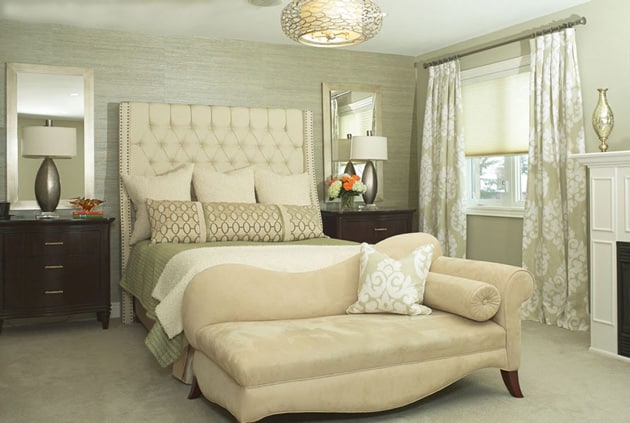 Image Source: Lumar Interiors
Image Source: Lumar Interiors
Trick Your Eyes
Interiors can be given a whole new look just by playing with our perception of space. As humans, we see two-dimensionally, and this makes it easier for us to trick our eyes into thinking a space is longer, wider, taller, or shorter. Here’s how:
Direction of Flooring
Another way to alter our perception of a room, and ultimately making it feel more balanced, is incorporating a directional flow through your flooring. It’s known that diagonal flooring, most often seen with tile and hardwood, will increase the look and feel of a room’s width. If you wish to make your space feel longer, vertically lined flooring will do the trick!
 Image Source: Chi Renovation & Design
Image Source: Chi Renovation & Design
Placement of Wall Prints & Colors
Your walls can be one of your closest allies when it comes to changing the look of a room’s size. If your home has low ceilings, one way to extend the height is to integrate vertical lines, either through paint or wallpaper. Vertical lines will draw the eye up, making the interior feel taller, whereas horizontal lines will accentuate an interior’s width by bringing the eyes down.
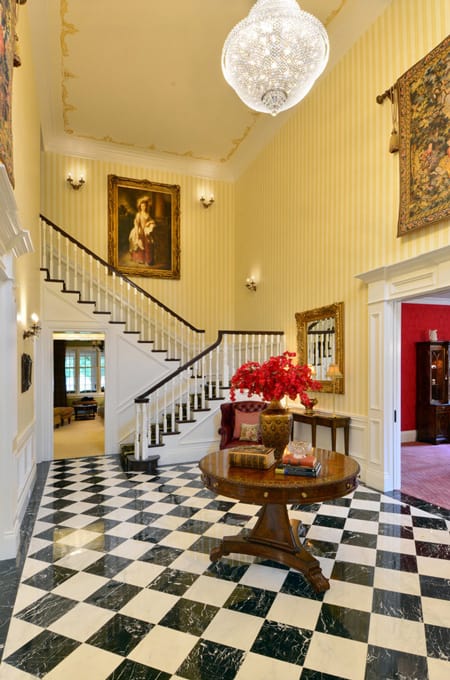 Image Source: Michelle Yorke Interior Design
Image Source: Michelle Yorke Interior Design
Even more interestingly is the walls on which you choose to paint! Say you have a rectangular shaped room; bold accent colors on the shortest wall will decrease the depth and increase the width. Vice versa is true if you use bold colors or prints on the longest walls, this will increase the depth and decrease the width. And lastly, painting the ceiling a bold color has the effect of making high ceilings appear shorter.
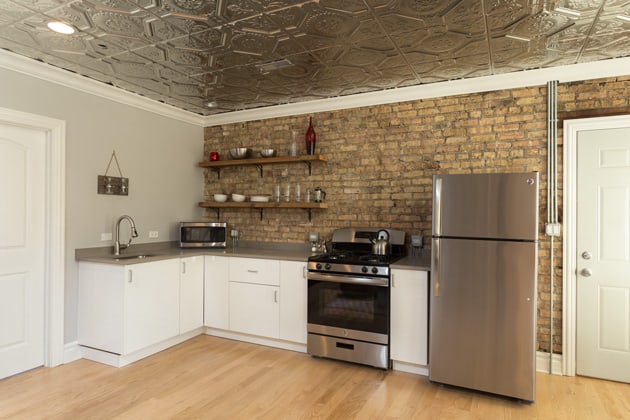 Image Source: Chi Renovation & Design
Image Source: Chi Renovation & Design
Choose The Right Color Palette
Bold Accent Colors
While more spacious rooms can easily harbor bright and bold accents, compact spaces are usually best suited with pastels and neutrals. Larger interiors can easily balance vivid accent walls with space - meaning, if you have a passionate red accent wall in a nicely sized living room, the light and space between furnishings and accent wall(s) will seem proportionately distant. Sort of like working with negative space, this balance of free space, color, and furniture ensures the red wall doesn’t overpower the design but instead creates cohesiveness through scale. Also, opting for warmer color schemes will create an intimate feeling in a large space.
 Image Source: Michelle Yorke Interior Design
Image Source: Michelle Yorke Interior Design
Pastel Color Palettes
Pastels work wonders at expanding spaces due to their light and airy palette. For small interiors, this works beautifully as pastels will further lighten and brighten up any room, especially colors like lavender, mauve, and blush. Of course, too many pastels can be unpleasant on the eyes - as it may look too feminine or “cutesy,” so it’s important to mix a few neutrals in such as gray, brown, beige, etc. However, don’t feel as though each aspect of a small room has to be dressed in pastel or neutral tones -- think of these as great foundation colors while warmer and more saturated hues are for the accents!
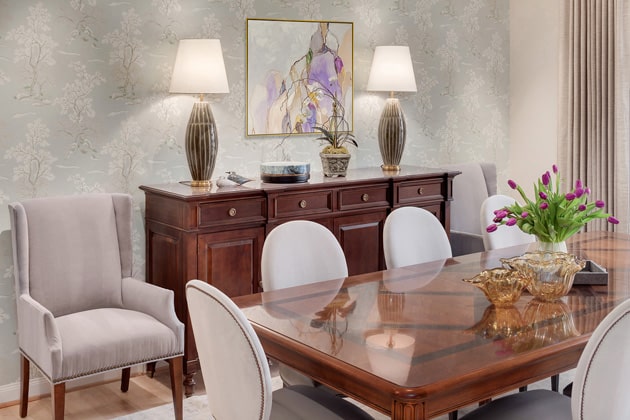 Image Source: Michelle Yorke Interior Design
Image Source: Michelle Yorke Interior Design
Don't feel overwhelmed with a space that you feel is too large or too small, because by accentuating light and utilizing complementary color palettes and decor, a harmonious and balanced interior is possible! I hope these tips on how to optimize space and perception gives you a clearer understanding of where to start with your next home project!
Good luck!♥

